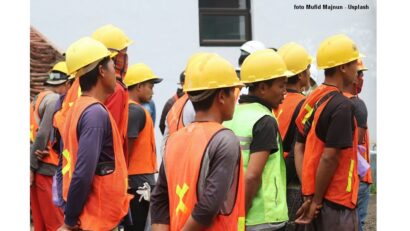The status of real-estate property in Romania
Being able to afford a place to live in Romania: landlord or tenant?

Christine Leșcu, 24.05.2023, 14:00
The information, albeit incomplete, is
interesting with respect to lodgings, as it was revealed by the population
Census carried in 2021. Such pieces of information carve out an image of our
country caught between two extremes: at the lower end of the scale, a great
many localities are abandoned, especially in the countryside, where the houses outnumber
the inhabitants proper, while at the upper end of the scale we have the urban, extremely
crowded areas, and where we have fewer lodgings as compared to the number of citizens.
Concurrently, even though Romania has probably the greatest number of real estate
property owners across Europe, it fares poorly with the respect to the quality of
lodging. The concentration of the population in the big cities and on their outskirts
can be explained by the employment opportunities, educations and ways of
spending the leisure time the urban areas offer to those interested. As for the
depopulation of villages, it can also be explained through the demographic
decline but also through peoples’ migration to regions capable of offering, potentially
at least, a better life. Or at least that is the conclusion of the Associate Professor
with the Geography Faculty Bogdan Suditu, who is also the president of Bucharest
Municipality’s Technical Town-Planning Commission.
It is a trend that has been
on the rise after 1990 and even more, after 2000. The rural regions lose
population or the population is ageing, while many villages do not have any
population at all, any longer. Furthermore, there is this trend of youngsters
to migrate to the cities that, on one hand, have employment opportunities and,
on the other hand, education-related or professional training opportunities. I
also used the data provided by the census and the situation is quite worrying. I
should like to point to the fact that of 3,181 administrative-territorial
units, a mere 77 of them have more than 25,000 inhabitants, which is very
little. Meaning that 2.4% of the administrative-territorial
units have a reported number of inhabitants exceeding 25,000. But I will also
hit the other extreme. We have 2,501
administrative-territorial units, that is 78% of Romania’s administrative-territorial
units with less than 5,000 inhabitants. We sometimes have situations where the
number of employees in the municipality is not greater than the active
population of those commune. Indeed, we have hit upon two extremes where, on
one hand, the population is concentrated in the big cities, Bucharest, Constanța, Timișoara, Iași,
Craiova, Cluj and the metropolitan area of those cities is developing, while on
the other hand we have a great many administrative-territorial
units that stand to lose. We have, in Romania, a commune with 88 inhabitants. We’re
speaking about Batrana in Hunedoara County.
There is nothing
new about the situation reported for 2021; similar facts had also been reported
ten years ago, at the previous census. For instance, in 2011 they found out 129 villages had zero inhabitants and, following a calculation
system where, for the reported figure they took into account the overall number
of rural localities, the conclusion was that 2,000 villages had less than 100
inhabitants. Waiting for the complete data, we presume that in 2021, the phenomenon
has been more intense. What
can be done to improve the condition of the people living in those deserted
areas, but also that of those living in the over-crowded neighborhoods?
Bogdan
Suditu:
There
is a National Lodging Strategy which was officially approved last year and that
is a very good thing. Its targets mainly consider the vulnerable groups and
equally the improvement of access mechanisms to a decent lodging, whether we
speak about a rented place or about private property. Obviously, it is a national
strategy focusing on what the Government can do, yet it
also sets the framework for the cooperation with the public local authorities. The scourge of the demographic decline has not
hit Romania alone. There are many other countries facing similar problems. The
mechanism the Government has come up with, the ensuing strategy, target the improvement
of mechanisms, so much so that, on one hand, in the big cities and in the
crowded areas, the lodgings stock should develop, while, on the other hand, it
is obvious that lodgings can also be built in the rural regions, but there we
still need to see for whom exactly that can be implemented. If Romania draws population,
or migrants, they’re highly unlikely to head for the rural regions. So what can
we do? We need to improve, meaning we need to use the existing resources more
efficiently. For instance, instead of having five schools in a rural area hit
by depopulation, one such school will just do, a school with good teachers,
where children from remote villages can be fetched with a school bus made
available by the town hall. It is one of the solutions that can be implemented and
it really is implemented, in some cases, so that people’s living standards can
be improved and they do not have to leave any more.
As for overcrowding, in
2020, 45% of Romanians lived in overcrowded lodgings,
with the reported such percentage being the highest in the EU. It is, obviously,
an average percentage, Bogdan Suditu explained. He went on to say the
phenomenon is typical for the big cities, but also for the smaller ones. It
mainly takes into account the stock of lodgings built during the communist era
and where, as we speak, lodgers of several generations bundle in. Bodgan Suditu:
There are
still very many people, in Romania, who are very close to retirement or who have
just retired, who still live in the apartment they moved into 30-40 years ago, where they raised their children, but the latter
are gone, while the elderly stayed. So such a situation is a reality of the big
cities and we should be concerned about that, we need to find solutions
tailored to the new circumstances, as the elderly inhabiting such very big lodgings,
that does not mean they have a better living standard, since the maintenance
costs for such lodgings are very high. And obviously, for some, they have a
large and fine lodging, yet it is very costly as compared to a retired person’s
incomes.
Paradoxically, Romania
is also the European country with a great number of real estate property owners, the Romanians
opting for buying their own house or flat rather than paying a rent for their
lodging. But what are the consequences of that? Bogdan
Suditu attempts an answer:
We become owners at a very,
very high cost. The idea of ownership and the safety ownership brings with it, that
is a very good thing. Unfortunately, the idea of owning a lodging, apart from
the costs we’ve spoken about, it comes with very many barriers related to mobility. The moment you purchased the apartment on loan, it is all too clear you are not
going to move out very easily, even if you may find out after a month, or a year,
that your neighborhood falls short of certain utilities, After one, two or
three years, when you have children and you find out there is no nursery school
in the neighborhood you moved into, it is going to be pretty hard, since you
contracted a real estate loan and therefore you have no choice other than living in
a neighborhood on the outskirts of
Bucharest, Cluj or Iasi, it will be difficult for you to find someone else who
is willing to buy it so you can find a lodging which is closer to the nursery
school or closer to a park and suchlike.
The need for safety provided by having a
property of your own, that need is still great for the Romanians. Yet the stock
is very limited of the built lodgings if such a need is to be catered for, a
need which sometimes is in contradistinction with another one: the need for
mobility.






























